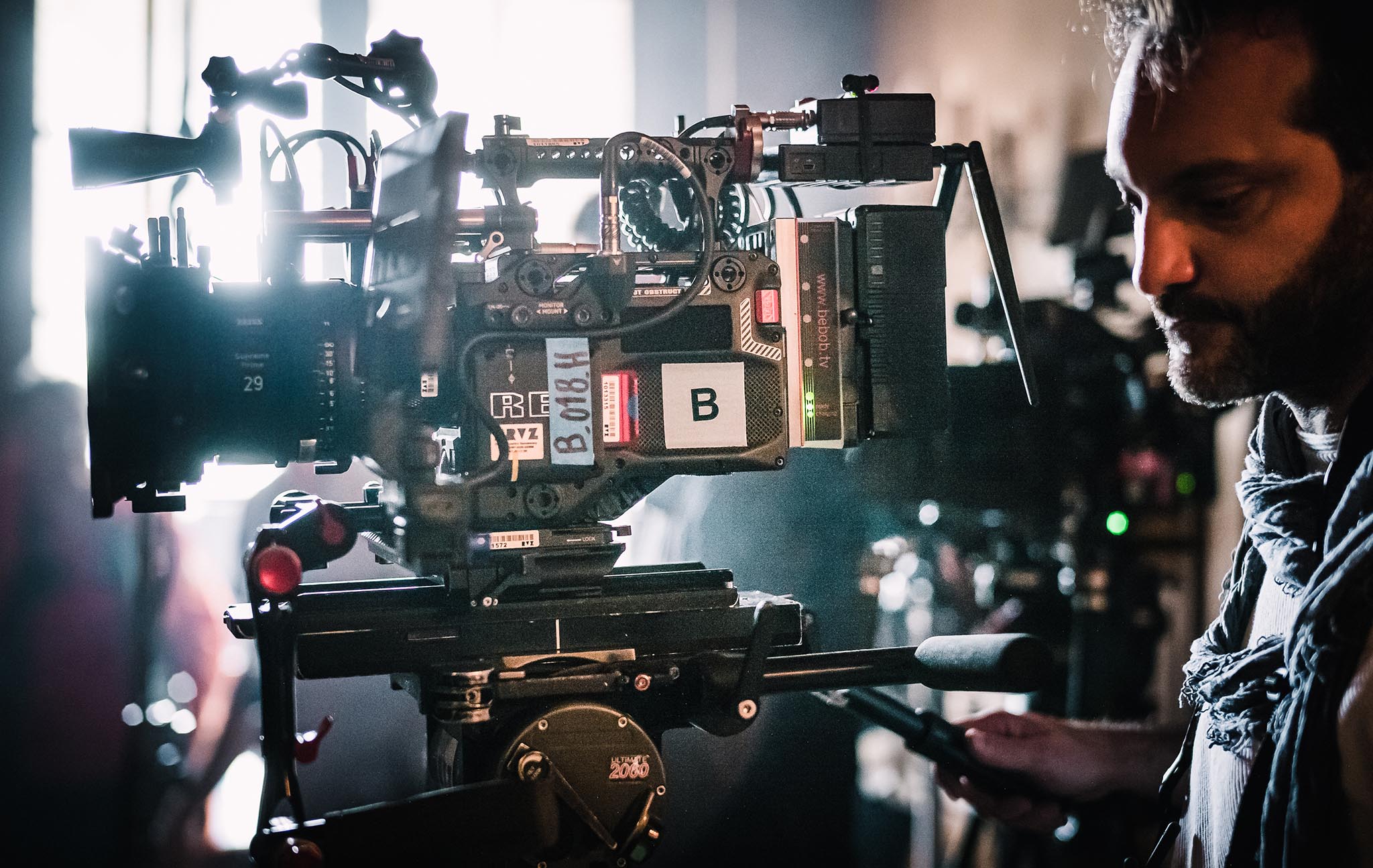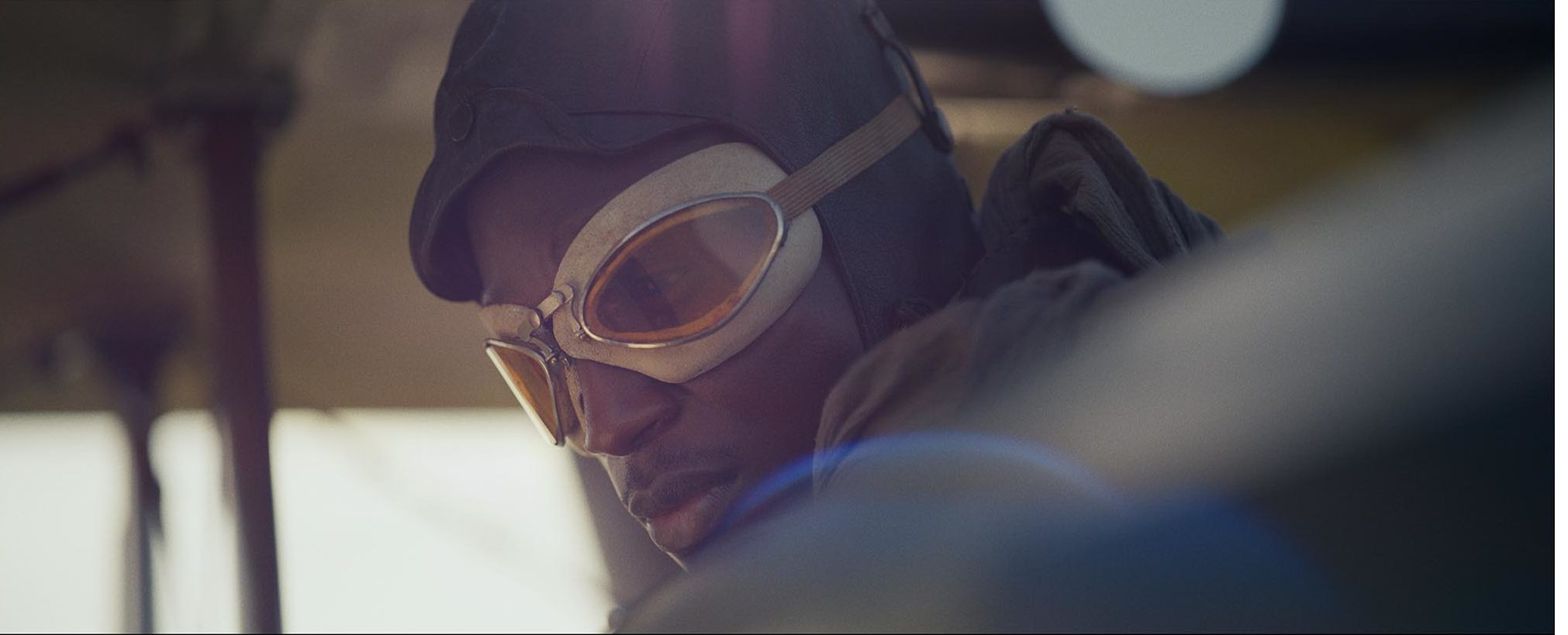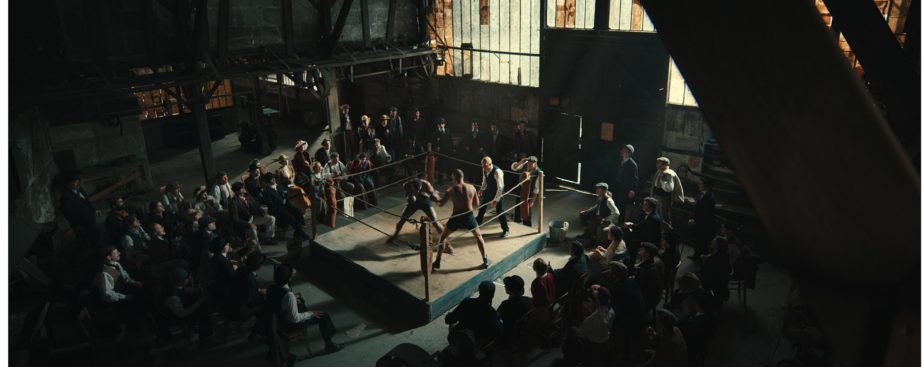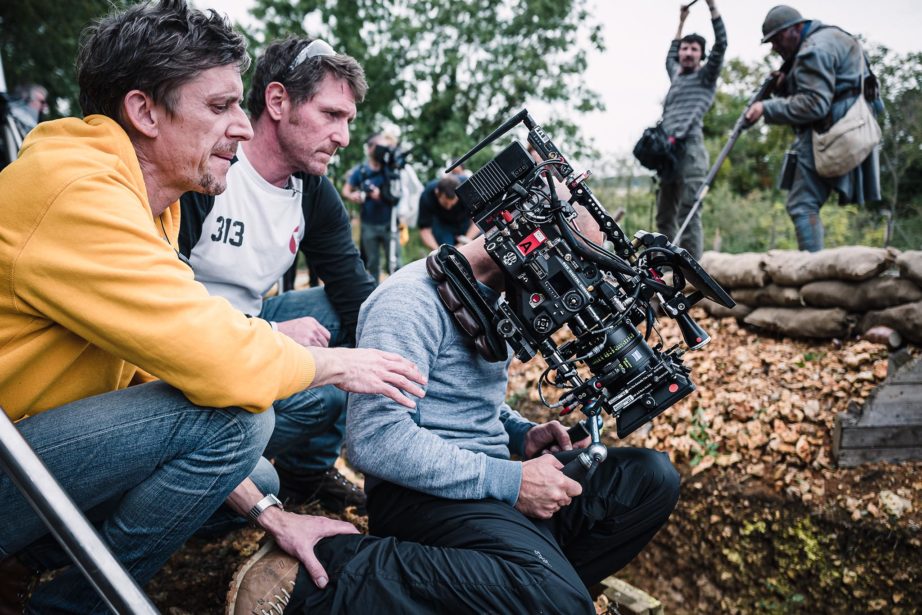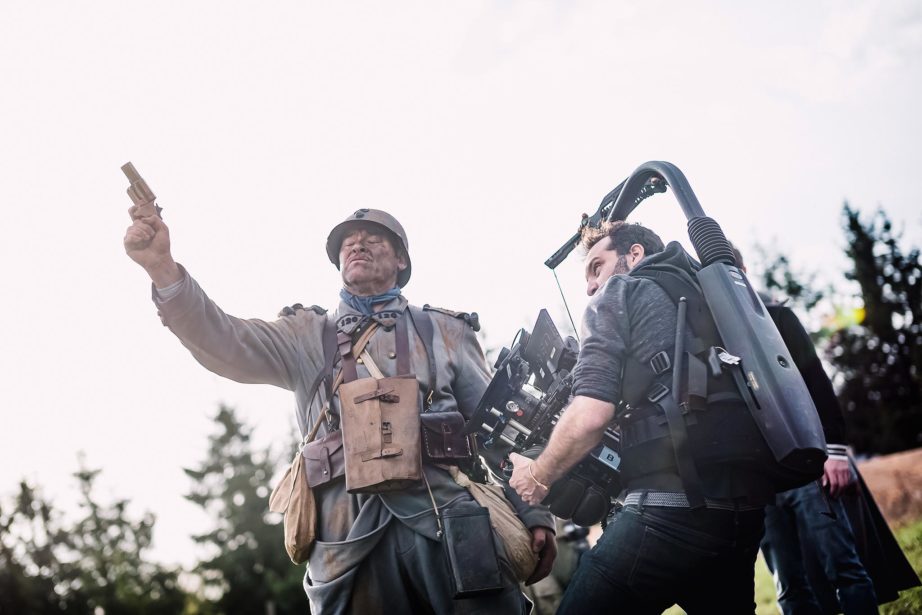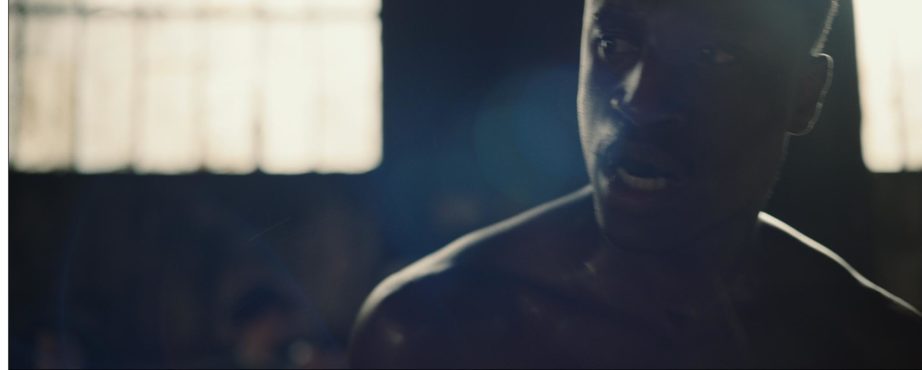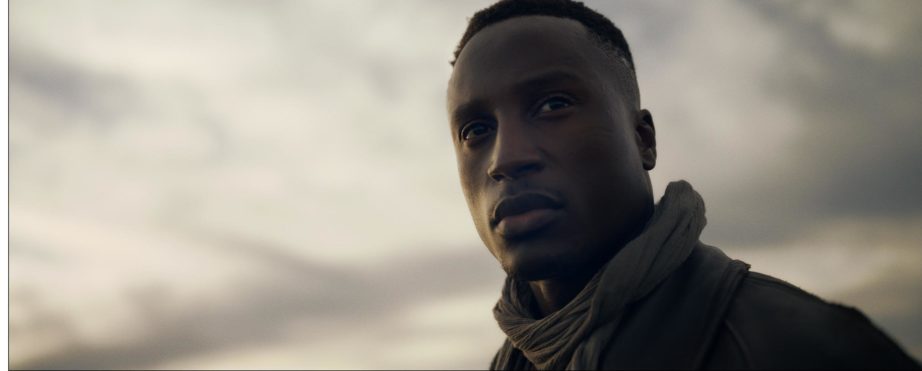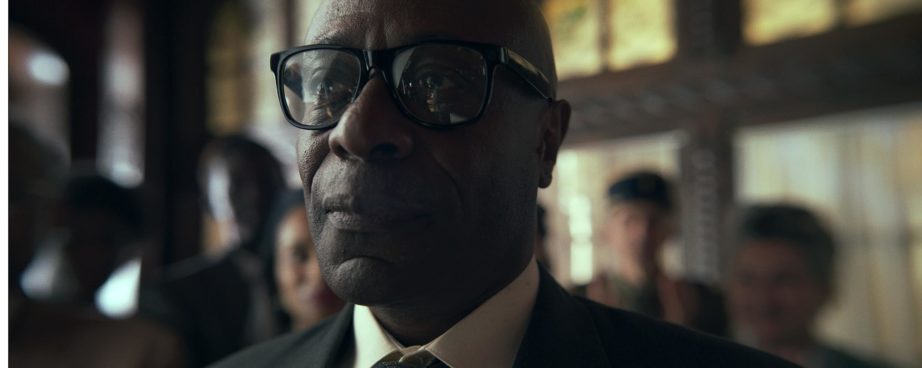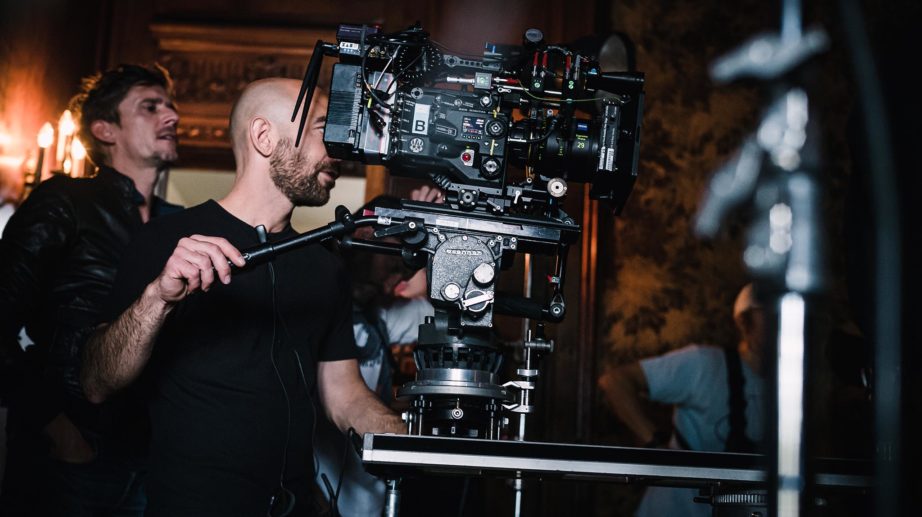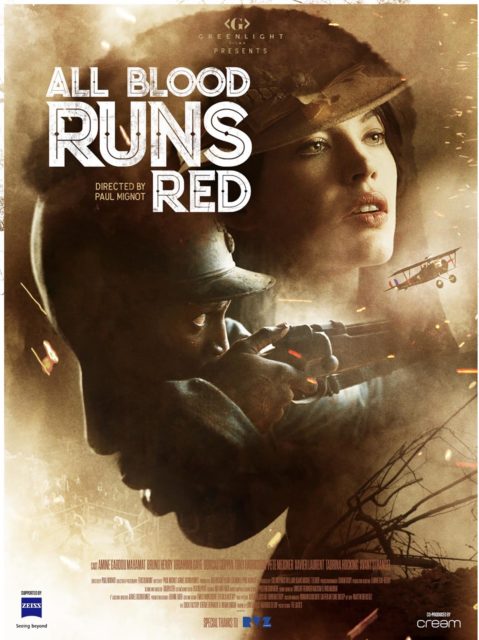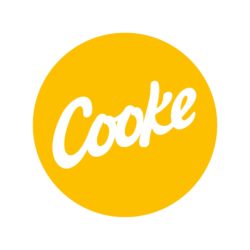Paul Mignot (above) wrote, directed and operated “All Blood Runs Red.” It is a well told story with great production value, beautifully directed, acted and shot. Eric Dumont AFC was Cinematographer.
Jon Fauer: How did this project start for you?
Paul Mignot: Thank you so much. The idea started two years ago when I heard the story. I thought it would make a beautiful feature film or TV series about an incredible individual. He was born in Columbus, Georgia; stowed away on a ship to Europe; became a boxer in Paris; enlisted as one of the few black combat pilots in World War I; played as a jazz drummer; managed a jazz club in Paris; married; fought again for France in World War II; and eventually moved back to the US. His life was amazing.
Our short film began when ZEISS contacted me through RVZ. They wanted a film that would demonstrate the qualities of their new Supreme Radiance Primes under different types of lighting to show how the lenses react. Other than that, they left it up to us. It evolved into a proof of concept, a nine-minute story.
The production value was superb. How were you able to achieve all that? Were you able to get outside funding?
Amazing producers, an inspired DP and a great team were key. All departments consisted of very talented and experienced people who worked hard to achieve a film that we could be proud of. Our first AD Armel Gourvennec also helped a lot in the writing process, making the piece doable in 4 days. The production value came from 10 years of experience in the commercial business: of finding the right locations, being in the right place at the right time, having good wardrobe, good actors and appropriate locations. Also, we had great support from many partners who donated cameras, lighting, trucks and logistics. It was a little project that became a large scale passion project.
Your attention to detail in the film is extraordinary. How did you begin your career?
Thank you. I attended a film school called 3iS (Institut International Image & Son) in Paris. I started as a camera assistant and Steadicam operator. I worked in the feature film industry for years, moving up to directing second unit. Then I started directing and shooting commercials.
You directed and operated on this film?
We had two RED RANGER MONSTRO 8K VV cameras. Eric Dumont AFC was the DP and A-Camera operator. I directed and operated the second camera. I cannot separate directing from camera operating. Not on every shot—sometimes I step back a bit, but it helps me to have a connection with the actors. It makes me feel as if I’m in the scene with them.
You mentioned RVZ. What is the connection?
Samuel Renollet was also a camera assistant before becoming head of the camera department at RVZ. We can talk the same language. It’s not only about the story; it’s also a story of tools, and Samuel is amazing. I’m a director who is very interested in technique, optics, cameras, and all of that.
In this story of tools, what was your impression of the ZEISS Radiance Primes? How did you decide that they were the right lenses for your story?
To be honest, it was the other way around this time. We had the opportunity to shoot with the ZEISS Radiance Primes. Then the story was developed around them. So, it was a bit reversed from the usual procedure. I loved them. And I’m in love with Large Format. We are much closer to the actors. It redefines our distance to the subject, the location and everything. With Large Format, I was amazed by the quality of the details and the texture of the lenses. Many brands of new lens families are super sharp or super modern in a way. I really liked the vintage quality of these modern lenses. ZEISS found a very good balance between having sharp details and lenses with a soul, that says something.
They have texture, the blurs are beautiful and it’s smooth on the skin. Their blue flares are superb and they are broken into different types of shapes that were very pleasing. It is interesting to see this amazing mix of wide focal lengths, Large Format and textures.
When you work with flares, it appears that you are using them artistically to tell the story. It’s not just for the flares’ sake.
The flare is, of course, a very easy way to make things look beautiful. But, the more you use this trick, the more you have a lack of meaning. So when I started thinking about this movie, I wanted to tell the story of a man who fought his entire life. But why? It came from his feeling weak as a child when facing forces that were stronger than him, even stronger than his father. The concept of going back into the past, to have this recurring image of a child facing moments of struggle, led to the need to build an esthetically compelling universe. For that, I worked with the idea of dynamic lighting, of flares, to build that narrative. The flares became elements of the world and moments where he was struggling in his childhood.
Throughout the movie, flares become a narrative step to create a space in his mind. For example, when a journalist asks him a question, he does not answer. It is a memory. It is a narrative bridge to the past.
Even though it’s a period piece, there are flashbacks that do not have a typical vintage lens look that’s soft and degraded. It was like an artistic and beautiful modern narrative.
I like the idea of having texture. This is where ZEISS really scored with these lenses and enabled us to shoot a period piece that is not surgical or super sharp everywhere. You get smoothness and texture on the skin, but you can still have the softness that we love in vintage lenses that we formerly used to bring back this idea of the past.
Did you use filters or smoke? In the boxing arena, it almost looks smokey when you’re looking against the windows?
We did not have smoke. We used NDs. I like to work wide open with very shallow depth of field where the lenses express themselves more. We used diopters on some shots just to go very close. We did not use smoke because of production logistics. We had only 15 extras, so for the wide views we shot some plates to multiply the people and make it feel as if there were 120. I played around with putting the extras in the background and changing their wardrobe. We couldn’t use smoke because of this, mainly. You get the feeling of rays of light thanks to the lenses.
Please explain how you feel closer to the actors when shooting in Large Format.
Large Format allows you to cover a wider angle with a longer focal length. Put another way, for example, if we are framing a close-up with a 50mm lens in Super35, we might be 5 feet from the actor. Now, if we want to shoot the same size close-up with the same 50mm lens in Full Frame, we are 3 feet from the actor. So, we get the same framing but we are closer to the talent. This is very interesting as a director because it changes my habits. It allows me to have a different experience with the space, the actor in that space, and with the camera.
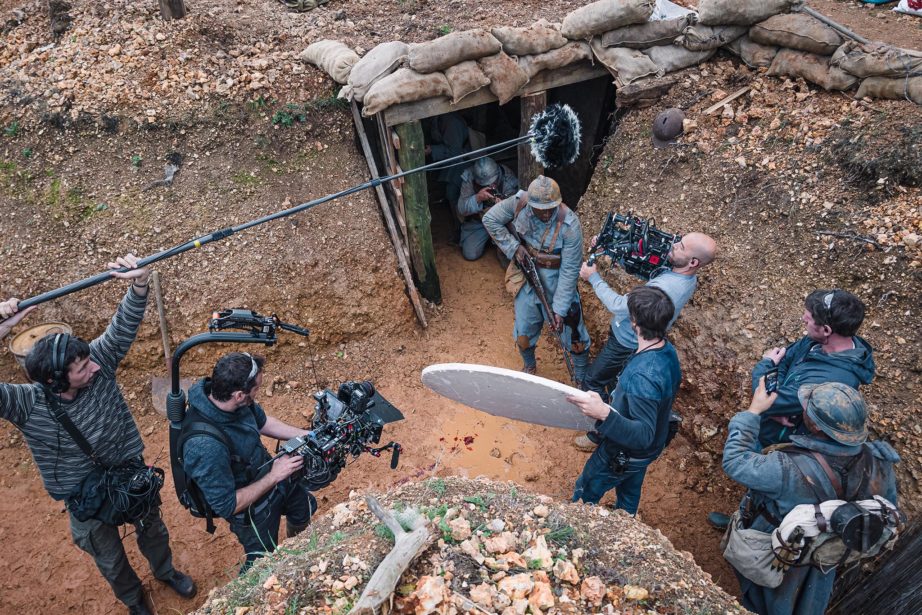
Paul Mignot, above left with Easyrig. Eric Dumont AFC, above right handheld and below on OConnor 2060 and Slider.
Is Large Format catching on in France?
Everybody is starting to move there. It definitely will be among the new things in the coming year. Not everyone is equipped yet. Some producers are still asking questions about data size. But I’m pretty sure that Large Format will gain even more of a share in production. Ultimately, the important thing is just to shoot a movie and tell a story, whether it’s with an iPhone or with Large Format. But, as a director operating cameras, I think Large Format is super interesting.
Tell us about post production. You mentioned larger data files.
Most of the classic post production was done through my company because we have our own editing and color grading suites. All the visual effects were done by friends at their company DUCK FACTORY. They did amazing work, adding bullets, blood impacts and even full CGI flying planes. We are quite accustomed to working with the RED RANGER MONSTRO 8K VV in 5:1 REDCODE RAW.
We wanted to shoot RAW to keep the maximum amount of detail. We worked with proxies for the edit, conformed in the usual way and exported just the specific shots for final grading and conforming.
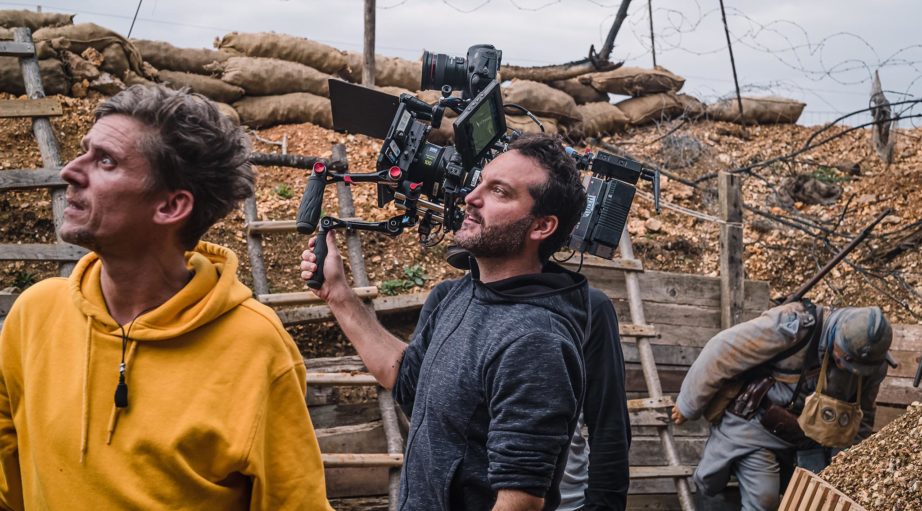
Paul Mignot with RED RANGER, ZEISS Supreme Radiance Prime, and Canon DSLR perched on top for additional off-speed cutaways.
To summarize, RVZ introduced you to ZEISS. ZEISS wanted a film to show what the Radiance Primes could do. You had the story of Bullard already written and pitched it to ZEISS.
No, I wrote it specifically for this situation.
That’s incredible, considering the amount of historical coverage. How long did it take?
It took 7 weeks to write, prep, scout, cast, shoot, edit and post-produce.
What is the next step? Maybe a full length feature?
I would like to do that, for sure.

